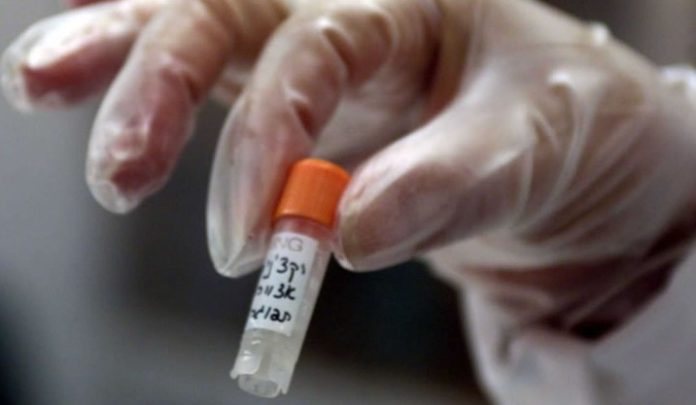
Though it has never before been tested in humans, the experimental Ebola drug that elicited a seeming “miracle cure” in two American missionary workers stems from antimicrobial research started in the pre-antibiotic era, according to a new scientific commentary published in the Annals of Internal Medicine.
Dr. Kent Brantly and Nancy Writebol were working at an Ebola clinic in a Liberian hospital, where it is believed they contracted the deadly Ebola virus — responsible for 1,013 deaths during the current outbreak, according to the World Health Organization’s (WHO) August 11th update.
One of the world’s most infectious diseases, Ebola has a case fatality rate of up to 90 percent and is characterized by the abrupt onset of fever, intense weakness, muscle pain, headache and sore throat. At present, treatment for the disease is limited to intensive supportive care. However, the American missionaries were offered the opportunity to take ZMapp – an experimental drug that had previously only been tested on monkeys – and it looks as though the treatment may have saved their lives.
In a new article, Dr. Scott Podolsky, associate professor of Global Health and Social Medicine at Harvard Medical School, explains that the concept behind ZMapp is not a new idea. In fact, says Dr. Podolsky, the drug actually has much in common with methods of treating illness that were being developed toward the end of the 19th century.
History repeating itself?
ZMapp is a three-mouse monoclonal antibody; it was made by collecting the antibodies created in the blood of mice after exposing them to fragments of the Ebola virus. Dr. Podolsky writes that this method mirrors that of passive serotherapy, which was developed over a century ago.
The methodology, he writes, first began to be developed following the discoveries of microbiologists Louis Pasteur and Robert Koch, who started to identify the agents of diseases such as anthrax, diphtheria and pneumonia. By 1890, humoral factors were then discovered in infected animals that could be transferred into laboratory animals to protect them from the toxins of diphtheria and tetanus.
Dr. Podolsky writes how this discovery led to treatment for humans:
“From the 1890s onward, this model of production – expose an animal (guinea pig, rabbit, cow, horse, etc.) to an identified microbial pathogen, generate antibodies (or use convalescent serum from former patients), and then ‘passively’ transfer the pre-formed antibodies to an exposed animal or person – could be expanded to such feared and prevalent diseases as pneumococcal pneumonia and meningococcal meningitis.”
Serotherapy was refined during the first half of the 20th century in controlled studies that focused on pneumococcal pneumonia, referred to by some as “the Captain of the Men of Death.” Serotherapy was found to be effective when targeting particular strains of the disease. Dr. Podolsky writes of “once-moribund [dying] patients described as sitting in their beds reading the newspaper the following morning,” following serotherapy.
In some cases, it was able to affect recovery in patients who had previously been considered to be on the brink of death, mirroring the dramatic turnaround in the case of Dr. Kent Brantly. Only days before receiving ZMapp, Dr. Brantly had called his wife to say a final goodbye. Fortunately for them, this proved to be premature.
What happens next?
Although it looks as though the two Americans could be heading toward recovery, there is still a lot of uncertainty surrounding ZMapp and its role in the future of the Ebola epidemic.
Many are wondering whether the drug will be given to others who have been affected by the outbreak. As ZMapp is still an experimental drug, which before now had not been tested on humans, officials have said that it is unlikely that it would be rolled out for public use without further research. However, the Liberian government announced yesterday that they had received approval to use the drug to treat two doctors who contracted the virus while working at a local hospital. The doctors will become the first Africans to ever receive the treatment.
The manufacturer of the drug, Mapp Biopharmaceutical, is footing the bill to deliver the doses to Liberia, though it is unclear how much of the drug remains. Supplies of ZMapp are extremely limited, and although additional drugs can be manufactured, the company has said it would take months to produce even modest quantities.
Meanwhile, all three U.S. facilities established to quickly make vaccines and therapeutics in the event of a major public health threat announced this week that they are prepared to assist the U.S. government in any efforts to scale up production of Ebola treatments. The facilities, called Centers for Innovation in Advanced Development and Manufacturing (ADM), were set up by the U.S. Department of Health and Human Services in partnership with private industry, to respond to pandemics or chemical, biological, radiological, or nuclear threats. Combined, the centers have the capacity to produce and deliver at least 50 million doses of vaccine against pandemic influenza, the most likely source of a health emergency, within 12 weeks. Any Ebola order would be for far fewer doses.
With ZMapp in the headlines, Dr. Podolsky hopes that scientists will be encouraged to conduct more research on potential uses of passive serotherapy in the future. He believes that the earlier era of passive serotherapy can provide crucial insight for the treatments of tomorrow. Antimicrobial remedies such as bacteriophage therapy, probiotics and passive serotherapy all have their origins in the same era and could become increasingly important as more and more diseases develop resistance to antibiotics. Additionally, the CDC considers passive serotherapy to be the most promising countermeasure to bioterrorism, as it can prevent disease even after exposure to an infectious agent.
